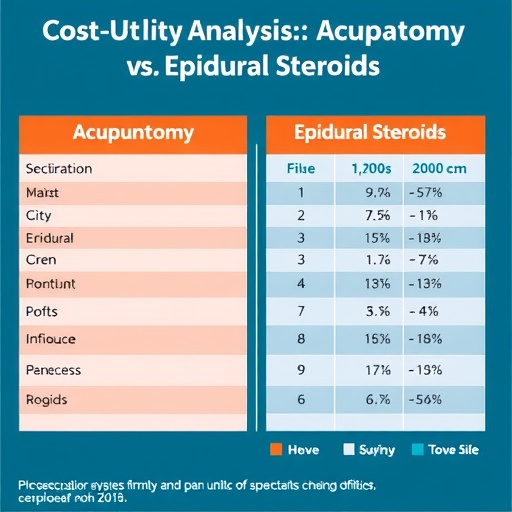Findings from Arm H show that in a heavily pre-treated cohort of 17 distinct tumor types — several rare — with BRAF mutations, the combination of dabrafenib and trametinib showed promising activity outside of currently approved FDA indications
Treatment with dabrafenib and trametinib, a drug combination designed to target cancers that harbor certain BRAF gene mutations, was effective in a trial of 35 patients representing 17 distinct tumor types. The single-arm phase two study (Arm H), met its primary endpoint. The results will be orally presented on Monday, June 3rd at the annual meeting of the American Society of Clinical Oncology (Meeting Abstract 3002). Arm H is one of multiple treatment arms in the NCI-Molecular Analysis for Therapy Choice (NCI-MATCH or EAY131) trial. NCI-MATCH is being co-led by the ECOG-ACRIN Cancer Research Group and the National Cancer Institute (NCI), part of the National Institutes of Health.
“NCI-MATCH’s Arm H met its primary endpoint with an overall objective response rate of 33 percent,” said lead researcher April K.S. Salama, MD, a medical oncologist at Duke University. “These results are especially relevant given that this was a heterogeneous cohort of heavily pre-treated patients who had meaningful clinical benefit.”
The NCI-MATCH precision medicine trial assigns patients with solid tumors, lymphomas, or multiple myeloma with progression on prior treatment to a targeted therapy based on genetic alterations identified in pre-treatment biopsies. Rare cancers with no available treatment also qualify. Arm H (EAY131-H) evaluated the combination of the BRAF inhibitor dabrafenib (DAB) and the MEK inhibitor, trametinib (TRM), in patients with any of four particular BRAF gene variants: V600E, V600K, and two very rare variants, V600R and V600D.
Patients with melanoma or thyroid cancer were not eligible because the U.S. Food and Drug Administration (FDA) had approved DAB/TRM for these indications and there were late-phase trials in process at the time the study opened. Those with colorectal cancers were ineligible because of the established intrinsic resistance to BRAF/MEK-inhibiting therapies. Initially, patients with non-small cell lung cancer were allowed, but later excluded after the FDA approved DAB/TRM for this indication.
Patients received standard doses: DAB 150 mg orally twice a day and TRM 2 mg orally once a day on 28-day cycles until disease progression or intolerable toxicity. Restaging was performed every two cycles. The primary endpoint was objective response rate (ORR). The secondary endpoints were progression-free survival, 6-month progression-free survival, and overall survival.
Trial Results
Arm H enrolled 35 participants between January 2016 and February 2018. All 35 patients had the BRAF V600E variant. Of 33 evaluable patients, nearly 50 percent had three or more lines of prior therapy. The median age was 63 years. Race distribution was 88 percent white, three percent black, and three percent multi-race, with six percent not reported. The representation of females was 58 percent.
The arm met its primary endpoint a partial response in 11 patients, for an overall ORR of 33.3 percent (90% CI 19.9%, 49.1%), with a median duration of response (DoR) of 12 months. Varied histologies had a DoR of > 12 months: histiocytic sarcoma, cholangiocarcinoma and mixed adenoneuroendocrine carcinoma of unknown primary, among others.
Median progression-free survival was 11.4 months, and median overall survival was 28.8 months.
Most of the 17 distinct histologies were represented as single cases, with some exceptions:
- Three of four patients with cholangiocarcinoma, a rare cancer that forms in the bile ducts, had confirmed partial responses. The fourth patient had a significant reduction in target lesions. However, new lesions appeared on subsequent re-imaging, so this was not considered a confirmed partial response.
- Among seven lung primary cases, one patient had a partial response and five had stable disease. The seventh lung case had an 80 percent reduction in RECIST target measurements, but this patient was not evaluable because their scan was outside the pre-specified protocol window. Six of the seven cases were adenocarcinomas.
- Five of six gynecologic cases had a partial response and the other had stable disease. Five cases were a rare subtype–low-grade papillary seous adenocarcinoma of the ovary.
Adverse events (AE) were comparable to previously reported profiles of DAB/TRM; no new AEs were identified. The most frequent grade 3 AEs were fatigue, neutropenia, hyponatremia, hypophosphatemia, and urinary tract infection; there was one grade four sepsis; no grade five AEs.
“These results support the conclusion that BRAF/MEK combination therapy has widespread activity across multiple cancer types whose tumors harbor BRAF mutations,” said Keith T. Flaherty, M.D., a medical oncologist at Massachusetts General Hospital Cancer Center in Boston and ECOG-ACRIN study chair for the overall NCI-MATCH trial. “Continuing to explore this regimen in cancers for which this is not yet a standard regimen is warranted,” he said.
Dabrafenib and trametinib were provided by Novartis Pharmaceuticals under a Cooperative Research and Development Agreement with the NCI.
“NCI-MATCH is an ongoing and dynamic trial,” said Alice Chen, MD, a medical oncologist at the NCI, head of the NCI’s Early Clinical Trials Development Program, and NCI study chair for the overall NCI-MATCH trial. “Its signal-finding approach will likely influence how cancer clinical trials are designed and conducted in the future, as treatments that show promise may advance to more definitive studies.”
Correlative analyses are planned.
###
About the ECOG-ACRIN Cancer Research Group
The ECOG-ACRIN Cancer Research Group is a membership-based scientific organization that designs and conducts cancer research involving adults who have or are at risk of developing cancer. ECOG-ACRIN comprises nearly 1100 member institutions in the United States and around the world. Approximately 12,000 physicians, translational scientists, and associated research professionals from the member institutions are involved in Group research, which is organized into three scientific programs: Cancer Control and Outcomes, Therapeutic Studies, and Biomarker Sciences. ECOG-ACRIN is supported primarily through National Cancer Institute research grant funding, but also receives funding from private sector organizations through philanthropy and collaborations. It is headquartered in Philadelphia, Pa. For more information, visit http://www.
Media Contact
Diane M Dragaud
[email protected]
https:/




